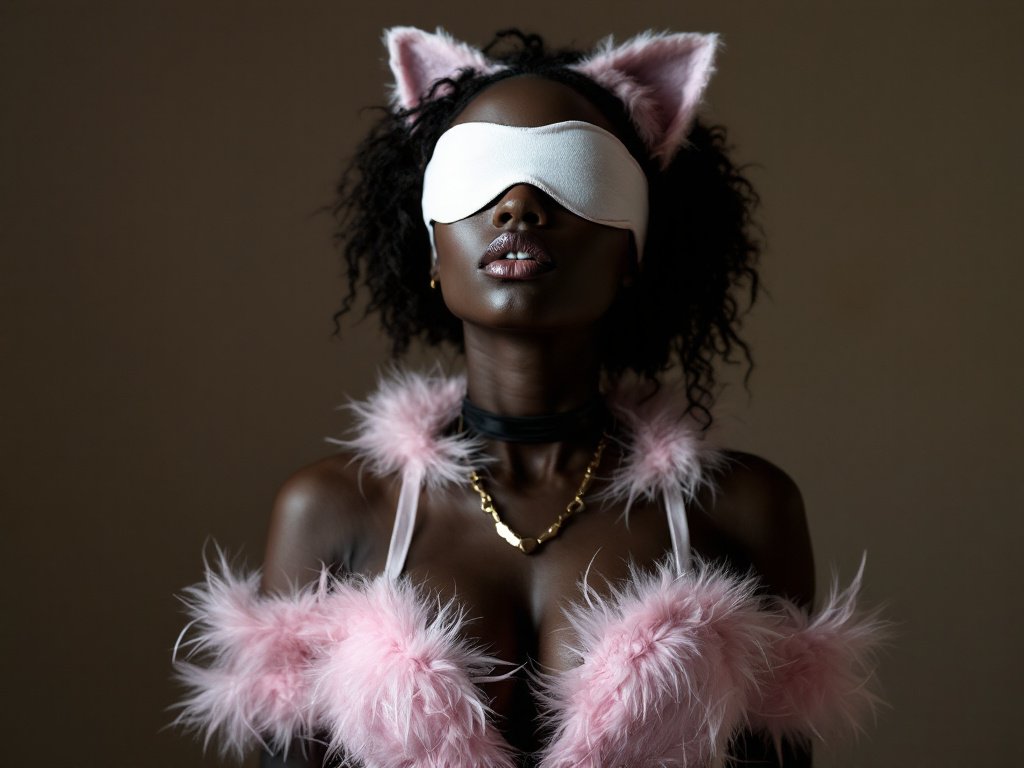
Finding Your Inner Animal: 10 Pet Play Types to Explore
Introduction
Pet play offers a wonderfully diverse world where individuals can embrace various animal personas, each with its own unique traits and behaviors. From the energetic and playful movements of a puppy to the serene grace of a kitten, the journey into pet play allows participants to explore their desires, express creativity, and escape the everyday pressures of life.
Understanding the different types of pet play can help you find an identity that resonates with you and enhance your experiences. The motivations behind each type range from seeking comfort and companionship to indulging in erotic fantasies. This exploration not only deepens connections with partners but also enriches self-awareness and personal growth.
In this article, we’ll delve into ten popular pet play types, providing insights into each one’s characteristics, activities, and community. Whether you’re a seasoned player or new to the scene, these options will inspire you to discover your inner animal and embrace the playful side of kink.
Understanding Pet Play

What is Pet Play?
Pet play is a form of roleplay where participants embrace the behaviors, characteristics, and identities of animals within a consensual framework. This kink can manifest in various ways, from taking on a pet’s persona to engaging in actions associated with animal behaviors, like barking or purring. The traditional configurations often include puppies, kittens, and ponies, but the range is practically limitless—one can embody any creature that resonates with them.
Through pet play, participants often engage in dynamics where one person assumes a Dominant role (the handler or owner), while the other takes on the submissive, playful role of the pet. The play can be purely recreational, providing a whimsical escape from reality, or entwined with more authority-submission dynamics, establishing a deeper psychological connection between partners.
Historical Context of Pet Play
The roots of pet play can be traced back to various cultural practices that emphasize role reversal and transformation into animal forms. While the exact origins are difficult to pinpoint, elements of pet play have appeared throughout history in diverse contexts, from tribal rituals involving animal mimicking to the playful masquerades of medieval festivals.
In modern times, the connection between BDSM and pet play has become more defined, particularly within the leather communities of the 20th century. As BDSM practices gained visibility and acceptance within alternative sexual communities, pet play began to emerge as a distinct facet, often celebrated for its playful yet deeply intimate nature.
The Psychology Behind Pet Play
The psychological aspects of pet play are fascinating and multi-layered. Engaging in this form of roleplay allows individuals to explore themes of power, vulnerability, and dependence in a safe and consensual environment. For many, adopting a pet persona offers an escape from everyday pressures of adult responsibilities, providing a chance to indulge in simple pleasures and carefree antics often associated with animals.
Moreover, pet play taps into fundamental human desires for connection and belonging. The devoted nature of pet-owner relationships allows participants to bond, facilitating emotional intimacy that transcends typical interactions. In this dynamic, the submissive aspect may experience feelings of liberation and comfort by relinquishing control, while the Dominant gains a sense of responsibility and authority that can foster trust and connection between partners.
Pet Play List
Pet play is a dynamic and engaging aspect of kink that allows individuals to explore their personalities through the personas of various animals. Each animal type offers unique characteristics and themes for roleplay, thus allowing a range of experiences and expressions. Here’s a look at ten popular pet play types you might consider exploring.
Dog Play

Dog play is one of the most recognized forms of pet play, where participants embrace the qualities associated with dogs. This often involves behaviors such as playful barking, obedience training, and even fetch-style games. Dog players might wear accessories like collars, leashes, and even dog ears. The dynamic can emphasize submission, as the player typically takes on a submissive role, being praised or disciplined by their handler. This type of play offers a sense of loyalty, companionship, and unconditional love inherent to dog-human relationships.
Cat Play

When engaging in cat play, participants often embody the independent and curiously aloof nature of felines. Cat players can find joy in playful antics like batting at toys, climbing, and playful purring. This playstyle may also lean into sassy or bratty behavior, where a cat player tests boundaries with their handler. Accessories like cat ears, collars, and tails can enhance the experience, allowing the player to fully embrace their feline persona while exploring themes of both independence and vulnerability.
Pony Play

Pony play combines the dynamics of pet play with elements specific to equestrians. Participants can take on the persona of ponies or horses, complete with bridles, saddles, and hoof boots. The focus often rests on obedience and training, where pony players may learn to respond to commands or perform tricks. This style of play incorporates both physical and emotional elements, as players engage in tasks like pulling carts or mimicking the graceful movements of ponies. It fosters a unique sense of service and teamwork between pony and handler.
Bunny Play

Bunny play is often characterized by playful, energetic behaviors typical of rabbits. Players tend to embody traits like curiosity and liveliness, hopping around, exploring their surroundings, and engaging in light-hearted fun. This type of play can involve wearing bunny ears and tails, along with playful accessories like carrots or large boxes. Bunny play is all about embracing a sense of joy and silliness while sharing an affectionate and nurturing bond with a handler, mimicking the tender relationship between bunnies and their owners.
Fox Play

Fox play invites participants to explore the crafty and cunning nature of these sly creatures. Inhabiting a fox persona can involve stealthy movements, playful escapades, and cheeky behaviors. Fox players might embrace their wild side, adding an element of mischief to their interactions. Accessories like fox tails and masks can enhance the experience. This type of play often emphasizes independence and adaptability, allowing individuals to embody traits that blend cunning intelligence with a playful spirit.
Pig Play

Pig play offers a unique opportunity to explore themes of indulgence and messiness. Participants may choose to embody the persona of a pig, incorporating playful behaviors like rolling around, snuffling in the dirt, and enjoying treats. This type of pet play often breaks traditional boundaries, allowing the player to revel in messiness while exploring submission and dominance dynamics. Costumes may include pig noses, tails, and even playful squeaky toys, fostering a sense of lightheartedness and carefree joy in the play.
Kitten Play

Kitten play captures the fascinating blend of playful curiosity and nurturing affection seen in young felines. Players tend to embody the innocence and playful antics of kittens, engaging with toys, being gently pampered, and exploring their curious nature. Accessories such as kitten ears, collars, and soft tails can enhance the experience, emphasizing both playfulness and a desire for comfort. This type of play can bring out a nurturing dynamic, where the handler takes on a caregiver role, creating a safe space for self-exploration and emotional expression.
Wolf Play

Wolf play immerses participants in the lore and mystique of wolves, focusing on themes of pack dynamics and loyalty. Players may embody the protective nature of wolves, embracing behaviors associated with being part of a larger community. This type of play often incorporates howling, group activities, and a strong connection to the instincts that bond participants. Accessories may include wolf ears, tails, or tribal gear to further enhance the wild aesthetic and emotional depth associated with this play.
Bird Play

Bird play encourages participants to tap into the freedom and vibrancy typical of avian creatures. Players may mimic the behaviors of different birds, incorporating flapping, chirping, and even nesting. This form of play often emphasizes a sense of exploration and joy, where participants can engage in lighthearted activities such as “flying” or hopping around. Accessories like feathers, masks, and wings can amplify this experience, fostering a whimsical environment that celebrates the beauty and freedom of being a bird.
Otter Play

Otter play emphasizes fun, curiosity, and a playful spirit, capturing the heart of these joyful aquatic mammals. Participants often embody the lively nature of otters, engaging in lighthearted activities such as splashing, playfully wrestling, or enjoying toys in a water-based scene. Otter players may choose to wear cute otter-themed accessories, helping to reinforce their persona. The dynamic of otter play fosters a connection based on playfulness and joy, allowing individuals to immerse themselves in delightful, carefree interactions.
These ten types of pet play provide a rich framework for exploration and self-expression, enabling individuals to step outside their everyday selves and tap into their inner animal. Whether seeking joy, connection, or an escape from reality, there’s an animal persona for everyone to discover.
How to Get Started with Pet Play

Venturing into the world of pet play can be an exciting journey filled with exploration, self-discovery, and creativity. Whether you’re a newcomer or someone seeking to deepen your experience, knowing how to navigate this unique community is essential.
Finding a Community
Engaging in pet play can feel isolating if you’re starting out, but connecting with a community can significantly enhance your experience. Look for local clubs or organizations that focus on BDSM or kink, as many have sections dedicated to pet play. Online forums and social media groups are also fantastic resources; platforms like FetLife and dedicated Facebook groups often have discussions, meetups, and events that can help you meet like-minded individuals. Don’t hesitate to participate in local events or conventions, as they provide opportunities to socialize, learn about various pet roles, and share experiences.
Setting Boundaries and Expectations
Before diving into pet play, clear communication with your partner(s) about boundaries and expectations is crucial. Discuss what each of you hopes to gain from the experience and agree on safe words to use if anyone feels uncomfortable or wants to pause. Define specific rules—for example, what behaviors are acceptable and what roles each participant will take on during your play sessions. This constructive dialogue not only fosters trust but also enhances the experience. Remember, the foundation of fulfilling pet play lies in mutual understanding and consent.
Exploring Gear and Accessories
One of the most fun aspects of pet play is the opportunity to explore various gear and accessories that can enrich your experience. Begin with basics like collars, leashes, and pet-specific outfits. Many pet players enjoy adding whimsical elements such as tails, masks, or ears to embody their animal persona fully. Depending on the animal role you choose—be it puppy, kitten, or pony—there are a variety of specialized items designed to enhance your play. You don’t have to invest heavily right away; consider starting with DIY options or borrowing gear from friends to see what feels best for you. This exploratory phase is all about having fun and discovering what truly resonates with your inner animal.
Conclusion
Pet play is an exciting and diverse realm that allows individuals to explore their identities and indulge their fantasies in a way that resonates personally. With ten different animal types to experiment with, each offering unique dynamics and experiences, there’s a perfect match for everyone. Whether you find yourself embodying the playful spirit of a puppy, the curious nature of a kitten, or the majestic demeanor of a pony, the key is to engage with joy and openness. Embracing your inner animal can lead to personal growth, deeper connections with partners, and an overall enhancement of your lifestyle.
Reflecting on Your Pet Play Journey
As you navigate through your pet play experiences, take time to reflect on what resonates with you the most. Consider what aspects of animal play bring you joy—be it the headspace, the dynamics with your partner, or the various roles and rituals involved. Reflecting on your journey not only helps solidify your preferences, but also encourages growth and deeper understanding of what you seek. Additionally, remember that your identity in pet play can evolve over time. Don’t hesitate to explore different animal types, as each brings with it unique adventures and opportunities for self-discovery.
Encouraging Safe and Positive Experiences
Safety should always be at the forefront of any play. Ensure that all activities are consensual with clear boundaries and safe words established beforehand. Discussing expectations and limits with your partner fosters a comfortable environment and promotes trust, which is essential in pet play dynamics. Also, take the time to educate yourself on safe practices, particular gear, and aftercare requirements specific to the animal types you pursue. With a focus on safety and consent, you can enjoy your pet play experiences fully, enhancing your connection with yourself and your partner while exploring the exhilarating world of pet play.